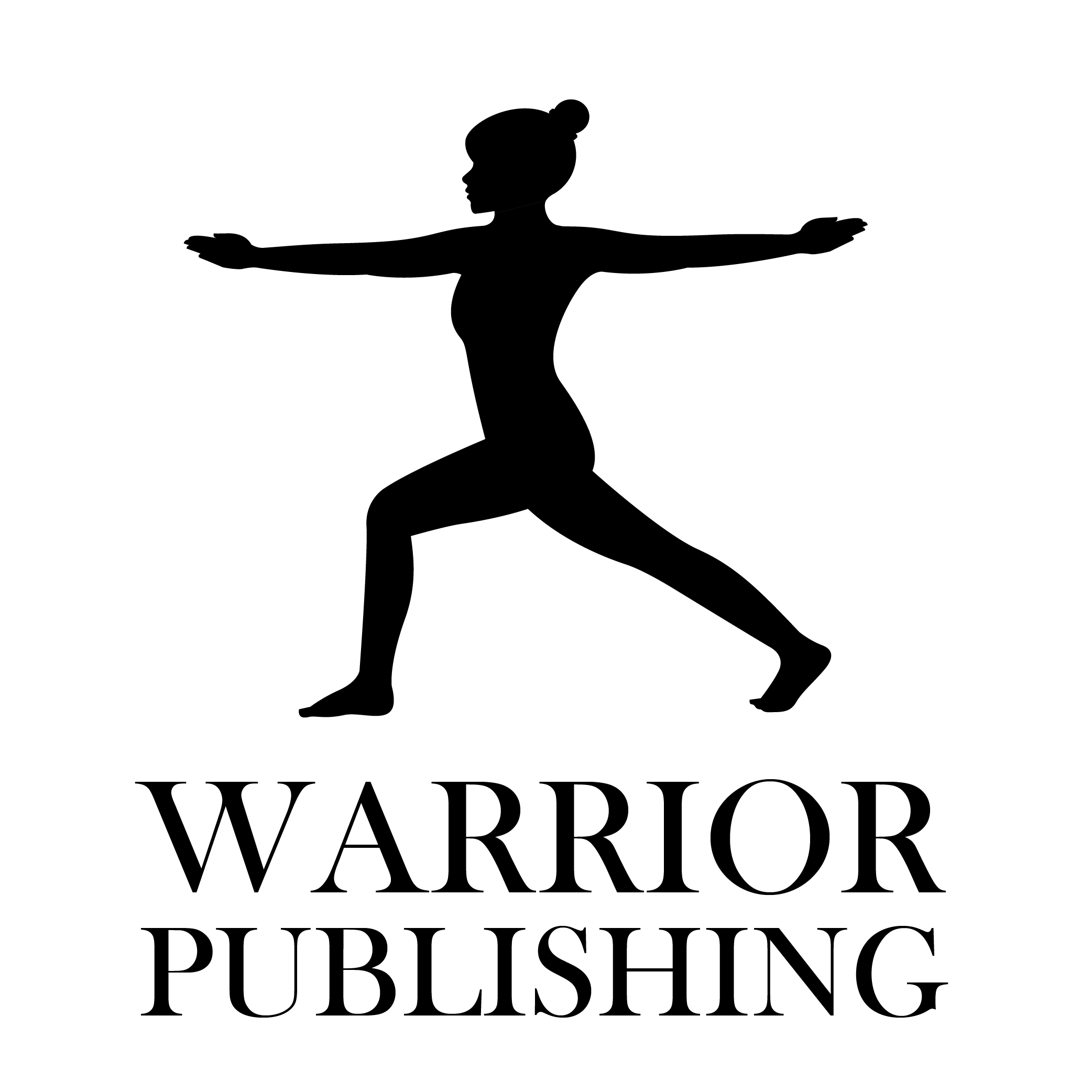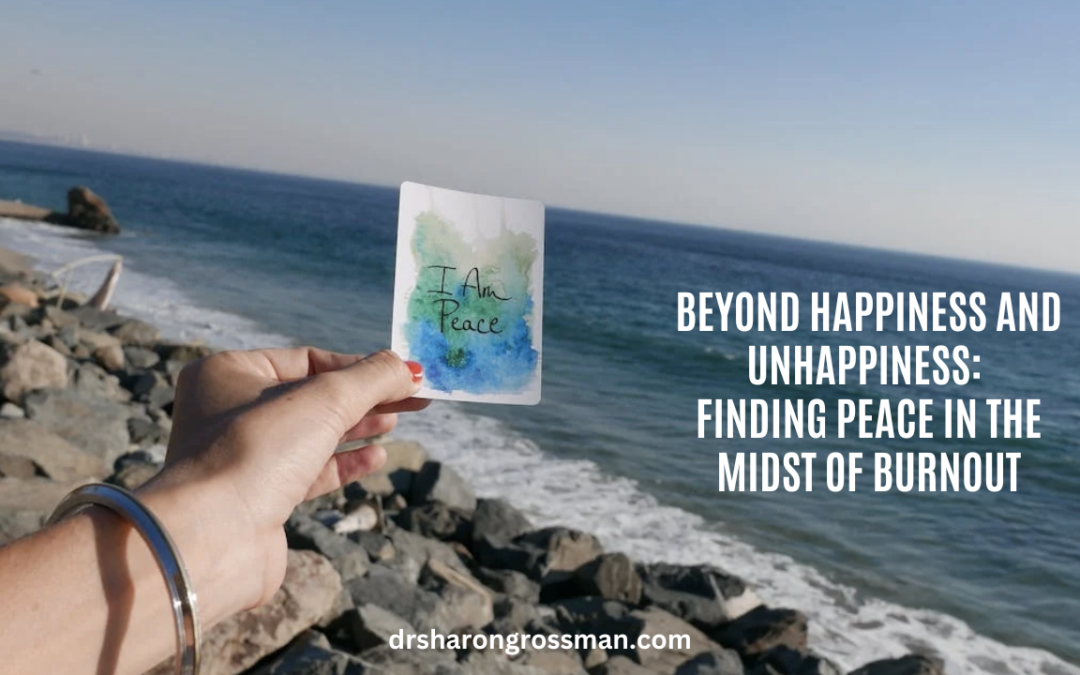Do you ever find yourself lost in anxious thoughts about the future or dwelling on regrets about the past? Are you constantly battling stress and burnout, wondering how to find a way out of the mental fog? Well, my friend, you are not alone. In fact, you are in the same boat as most of humanity. But fear not!
The solution to getting unstuck from these painful mental states lies within your grasp. It’s all about gaining control over your mind. And who better to learn from than the spiritual master, Eckhart Tolle? In his book “The Power of Now,” Tolle provides sage advice that can help you find inner peace. We’ve consolidated these into 10 mind strategies to help you be in the here-and-now, avoid suffering, and reduce stress and burnout.
Mind Strategy #1: Separate the Mind and Body
Have you ever noticed how stress and anxiety can cause physical pain and tension in your body? The mind and body are interconnected, and negative thoughts and emotions can manifest themselves as physical discomfort. But don’t worry, there are ways to separate the mind and body and reduce pain while gaining control over the present moment.
One way to do this is through mindfulness practices like meditation and yoga. These practices help you become more aware of your body and sensations while quieting the chatter in your mind.When you focus on your breath and bodily sensations, you can create a space between your thoughts and physical discomfort.
Another technique is to practice body scanning. Start by lying down or sitting in a comfortable position and close your eyes. Focus on each part of your body, from your toes to the top of your head, and notice any sensations or discomfort. Simply observe these sensations without judgment or resistance. This technique helps you become more aware of your body and can reduce tension and pain.
Mind Strategy #2: Understanding Enlightenment
Are you tired of feeling lost and disconnected from your true self? Do you long for a sense of peace and purpose in your life?
Tolle describes how enlightenment is our natural state of oneness with Being, and how connecting with the present moment can help achieve this state and reduce stress.
Enlightenment is not some lofty goal reserved for spiritual gurus and monks. It is a state of being that is available to everyone, regardless of their background or beliefs. It simply refers to being fully present, fully engaged in the moment, and fully connected with your true self. When we are in this state of being, we feel a deep sense of peace and contentment, free from the worries and anxieties of the past and future.
But how do we achieve this state of enlightenment? According to Tolle, the key is to connect with the present moment. Notice your thoughts and worries about the past and future and bring yourself back to your senses.
Take a few deep breaths to get centered. Pay attention to the sights, sounds, and smells around you. Notice any thoughts or feelings that arise without judgment, and gently guide your attention back to your breath. With practice, you’ll find it easier to stay present and reduce stress in your daily life. So, take a deep breath and give it a try!
Mind Strategy #3: Observing Our Relationship with the Mind
Our minds are powerful tools that can help us navigate through life, but they can also cause subtle pain and stress. The constant chatter of our thoughts, worries about the future or regrets about the past, can leave us feeling exhausted and overwhelmed.
The key to reducing this stress is to observe our relationship with our mind. When we become aware of our thoughts and emotions, we can begin to understand how they affect us. We can start to recognize patterns and habits that may be causing us stress.
One technique for observing our relationship with our mind is to practice mindfulness meditation. By focusing our attention on our breath or a particular sensation in our body, we can learn to observe our thoughts without getting caught up in them. This can help us develop a sense of detachment from our thoughts and emotions, which can reduce our stress levels.
Another technique is to practice self-inquiry. This involves questioning the thoughts and beliefs that cause us stress. By asking ourselves if these thoughts are true or helpful, we can begin to challenge them and let go of those that no longer serve us.
Observing our relationship with our mind is a powerful tool for reducing stress and increasing our sense of well-being. With practice, we can learn to observe our thoughts and emotions without getting caught up in them, and develop a sense of detachment that can help us live more peaceful and fulfilling lives.
Mind Strategy #4: Learning Mind Strategies for Avoiding the Present Moment
One of the biggest obstacles to being present is our own mind. Whether your tendency is to catastrophize about the future or ruminate on the past, you are distracted form what’s going on presently. And let’s face it, when your mind goes down these rabbit holes, you have more stress, you have a harder time falling asleep, and you’re not able to be truly present with your loved ones. Learning how to avoid these distractions and stay focused on the present can significantly reduce stress and increase our sense of well-being.
Here are a few techniques for avoiding distractions and staying present:
1) Practice mindfulness meditation: Mindfulness meditation involves focusing your attention on your breath or a particular sensation in your body. This can help you become more aware of your thoughts and emotions and learn to let them go.
2) Set aside time for reflection: Take some time each day to reflect on your day and how you feel. This can help you identify patterns and triggers that distract you from the present moment.
3) Avoid multitasking: Multitasking can be a major source of distraction. Try to focus on one task at a time and give it your full attention.
4) Limit social media and screen time: Social media and screen time can be major sources of distraction. Try to limit your use of these technologies and take regular breaks.
If you’ve already tried some of these and had success, great! Keep practicing those techniques and use this list to expand your repertoire.
Mind Strategy #5: Bringing More Consciousness into Everyday Life
Do you often find yourself going through the motions of daily life without much thought? This state of ordinary unconsciousness is all too common and can lead to stress and burnout. The good news is that you can bring more consciousness into your everyday life and handle stress more effectively.
When you are more conscious, you become more aware of your thoughts, feelings, and actions. This heightened awareness can help you catch negative thought patterns or behaviors before they spiral out of control. It can also help you be more present and engaged in your daily experiences.
To bring more consciousness into your life, try these techniques:
1) Take breaks: Set aside regular breaks throughout the day to check in with yourself. Take a few deep breaths, stretch, or take a short walk. Use this time to become more aware of your thoughts and feelings.
2) Practice mindfulness: Mindfulness is the act of being fully present and engaged in the current moment. You can practice mindfulness during any activity, such as eating, walking, or even washing the dishes. Focus on your senses and what you are experiencing in the moment.
3) Listen to your body: Your body often gives you clues about your stress levels. Pay attention to any physical sensations, such as tension in your shoulders or an upset stomach. Use this information to make adjustments to your day or take a break when necessary.
4) Practice gratitude: Gratitude can help you become more conscious of the positive things in your life. Take a few minutes each day to reflect on what you are grateful for. This can help shift your focus away from stressors and towards positive experiences.
Your mind might be unconscious by default, but you can bring it back online with intention and daily practice. The more you do so, the better you’ll be able to handle stress and prevent burnout. Start small with one of these techniques and gradually incorporate more into your routine. You may be surprised at the positive impact it can have on your life.
Mind Strategy #6: Dissolving Ordinary Unconsciousness
In addition to bringing more consciousness into your life, you can also think about dissolving the unconscious patterns and habits that lead to stress and burnout. When we are identified with our thoughts, emotions, and reactions, we are not fully present in the moment. This state of low-level unease, discontent, or nervousness can lead to stress and burnout.
The good news is that we can dissolve ordinary unconsciousness by shining the light of consciousness on it. When we observe the ways in which unease, discontent, and tension arise within us, we bring awareness to our subconscious patterns and behaviors. This awareness allows us to detach from our thoughts and emotions and be more present in the moment.
To dissolve ordinary unconsciousness, try practicing self-observation throughout the day. Ask yourself, “Am I at ease at this moment?” or “What’s going on inside me at this moment?” Instead of rushing to answer these questions, direct your attention inward and observe your thoughts and emotions with curiosity and compassion.
Remember, anything unconscious dissolves when you shine the light of consciousness on it. By dissolving ordinary unconsciousness, you can shine the light of your presence and reduce stress in your life.
Mind Strategy #7: Understanding Pain-Body and Accepting Tragedies in Life
Are you struggling to cope with painful experiences in your life? What if I told you that pain is an inevitable part of life, but suffering is optional?
Suffering arises from our attachment to the pain-body, which is a collection of unresolved emotional pain. If you want to avoid burnout and stress caused by the pain-body, it’s essential to understand its nature.
Tolle suggests that accepting tragedies in life and limiting pain is key to preventing burnout. The key is to accept that painful experiences are a part of life. You may not like it. You may want things to be different, but you accept that they are the way they are. You can’t change the past, so dwelling on it will only lead to suffering.
Mind Strategy #8: Being Permanently Alert and Practicing Active Waiting
Living in the present moment can help reduce stress and prevent burnout, but it’s not always easy to stay present. The mind is constantly pulling us into the past or future, and it can be challenging to stay focused on the present. That’s where “being permanently alert” and “practicing active waiting” come in.
Being permanently alert means staying fully present in each moment, with all your attention focused on what’s happening right now. This level of awareness can help you catch yourself when your mind starts to wander and bring yourself back to the present moment.
Practicing active waiting takes this even further. It means being aware that something important could happen at any moment and having your attention fully focused on the present moment, ready for anything that might come your way.
It’s like when I’m playing tennis – I am waiting for my opponent to throw the ball toward me. I know it’s coming and I have to prepare for it, so I’m watching the position of their body. I’m following the ball. And I’m aware of my breath, my stance, my racket so that when that ball comes over the net, I increase my chances of getting to it in a timely fashion.
These techniques can also be helpful in high-pressure situations, such as job interviews, public speaking, or important meetings. By staying fully present and alert, you can be more responsive, think more clearly, and make better decisions. It can help you manage stress by keeping you focused on what’s happening right now, rather than getting lost in worries about the future.
Incorporating these techniques into your daily life can take practice, but it’s worth the effort, especially if you want to rack up some points.
Mind Strategy #9: Recognizing the Destructive Nature of the Ego
The ego is often considered a fundamental part of our identity, but it can be destructive and lead to stress and burnout. The ego thrives on comparisons, judgments, and false identities, which can trap us in a cycle of negativity. The ego is that voice in your head that controls your thoughts and behavior, and it often relies on misery for its continued existence.
To recognize the destructive nature of the ego, we must first observe and understand its influence on our lives. This can be done by practicing self-awareness and mindfulness. Pay attention to your thoughts, feelings, and behaviors, and you’ll start to identify patterns and tendencies that may be driven by the ego.
Once you recognize the ego’s influence, you can start to detach from it and its destructive patterns. This can involve letting go of the need for control and surrendering to the present moment. It can also mean acknowledging and accepting your flaws and imperfections without judgment.
Mind Strategy #10: Going Beyond Happiness and Unhappiness to Achieve Inner Peace
In our modern world, we are often bombarded with messages that tell us we need to constantly seek happiness and avoid anything that makes us feel unhappy. However, this constant pursuit of happiness can lead to stress and burnout, as we become attached to our desired outcomes and struggle to accept the present moment as it is.
Eckhart Tolle encourages us to go beyond happiness and unhappiness and instead seek inner peace. Inner peace comes from accepting what is, without judgment or attachment. When we stop resisting the present moment and allow ourselves to be fully present, we can experience a deep sense of peace and fulfillment.
Here are some techniques for going beyond happiness and unhappiness to achieve inner peace:
1. Practice acceptance: Instead of resisting what is, accept it fully. This includes accepting your current circumstances, your emotions, and your thoughts. Acceptance does not mean you have to like everything, but it does mean you are willing to let go of resistance and surrender to what is.
2) Let go of judgment: Judgment keeps us stuck in our own ideas of right and wrong, good and bad. When we let go of judgment, we can see things as they are, without adding our own story to it. This can help us find peace in difficult situations and reduce our stress levels.
3) Focus on the present moment: Inner peace can only be found in the present moment. When we focus on the past or future, we are not fully present and we miss out on the peace that is available to us now. Practice bringing your attention back to the present moment as often as possible.
4) Cultivate gratitude: Gratitude is a powerful way to shift our focus from what we don’t have to what we do have. By focusing on what we are grateful for, we can cultivate a sense of peace and contentment in the present moment.
5) Let go of attachment: Attachment to outcomes, ideas, or people can cause us to suffer when things don’t go according to plan. When we let go of attachment, we can find peace in the present moment, regardless of what is happening around us.
By going beyond happiness and unhappiness and seeking inner peace, we can reduce our stress levels and prevent burnout. It may take practice and patience, but the rewards are well worth it.
Conclusion
Our mind is primed for all the conditions that bring us suffering. We are wired for negativity, comparison, judgments, anxiety, and ruminations.
It’s time for you to take control of your mind. With the 10 powerful mind strategies from Eckhart Tolle’s book “The Power of Now”, you can manage stress and prevent burnout. These techniques have the potential to transform the way you experience the present moment. While these techniques require practice and patience, the benefits are immeasurable. Remember, the power to change your mind is within you.
—————————-
Want me to speak to your organization about managing stress? Check out my keynote, “Make Stress Your Superpower.”
—————————-
Do you want to get my Burnout Checklist for free?
I’ve created a checklist to help you identify signs of burnout and steps to take to get immediate results. Curious?
Author

Dr. Sharon Grossman, AKA the Burnout Doc, is a clinically trained psychologist and subject matter expert in burnout and mental health. Associations and Fortune 500 companies hire her to be their closing keynote speaker, to help their members and executives crack the code on burnout, and create custom-tailored solutions for recovery.
Over the past 20 years, Dr. Sharon has been helping high achievers who are struggling with anxiety, overwhelm, and burnout go from exhausted to extraordinary by better understanding how their brain works and how they can design and run their programming on purpose to live the kind of life they want to live. She is the author of several books on burnout and mindset and host of the Decode Your Burnout podcast. Through her speaking, training, and coaching, she helps organizations keep their top talent.


Recent Comments